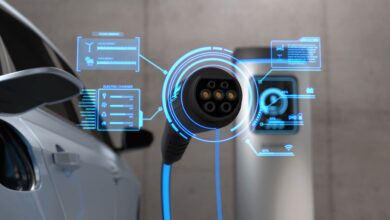Navigating Market Dynamics: Insights From Tesla And Gap

$GPS, $TSLA
The Gap, Inc. (NYSE:GPS) and Tesla, Inc. (NASDAQ:TSLA) are prominent players in distinctly different industries. The Gap, Inc., a stalwart in the retail clothing sector, has been striving to revitalize its brand and financial health amidst fierce market competition and changing consumer preferences. On the other hand, Tesla, Inc., led by the visionary Elon Musk, continues to dominate the electric vehicle market, pushing the boundaries of automotive technology and sustainable energy.
In recent market activities, Tesla and Gap have shown notable movements that reflect broader economic trends and organizational strategies. Both corporations, significant players in their respective sectors, have navigated through varying market conditions, highlighting the importance of adaptability and strategic foresight in today’s economic landscape. Tesla, a leader in electric vehicles, has faced challenges this year with its stock performance. A nearly 30% decline in share value, the company continues to innovate, particularly in areas like artificial intelligence and autonomous driving technologies. Tesla’s commitment to enhancing operational efficiencies and cutting costs is evident as it aims to bolster its market position amidst competitive and economic pressures.
Conversely, Gap has demonstrated a remarkable turnaround, with its stock price surging by 26% following a robust earnings report that exceeded expectations. The apparel retailer’s strategic adjustments, including the introduction of new styles and effective marketing campaigns, have begun to yield positive results. This resurgence is a testament to the ability to respond to consumer demands and market dynamics effectively. Both companies are also making significant strides in their operational approaches. Tesla’s advancements in self-driving technology are set to revolutionize the automotive industry, with plans to introduce its Full Self Driving (FSD) software in China.
This move could potentially open new revenue streams and solidify Tesla’s presence in one of the largest markets for electric vehicles. Gap’s operational strategies have also evolved, with a focus on revitalizing its brand and enhancing customer engagement. The company’s efforts to streamline its inventory and introduce appealing designs are aligning with consumer preferences, which is crucial for sustaining growth and competitiveness in the fast-paced retail sector. Moreover, the broader economic indicators such as consumer spending and inflation rates are playing a critical role in shaping the strategies of these companies. With the Personal Consumption Expenditure (PCE) price index holding steady and core inflation rates remaining unchanged, businesses are cautiously optimistic about the economic outlook.
However, the recent slowdown in personal spending and income growth signals potential challenges ahead, prompting companies like Tesla and Gap to remain vigilant and responsive to changing economic conditions. They are navigating through complex market dynamics with strategic agility and operational efficiency. While Tesla focuses on technological innovation and market expansion, Gap is capitalizing on its brand revitalization efforts. Both companies’ strategies reflect a deep understanding of market trends and consumer behavior, which is essential for long-term success in their respective industries. They continue to adapt and innovate, Tesla and Gap are not just responding to immediate challenges but are also setting the stage for future growth and sustainability.
**DISCLAIMER: THIS CONTENT IS FOR INFORMATIONAL PURPOSES ONLY AND SHOULD NOT BE INTERPRETED AS INVESTMENT ADVICE. INVESTING INVOLVES RISK, INCLUDING THE POTENTIAL LOSS OF PRINCIPAL. READERS ARE ENCOURAGED TO CONDUCT THEIR OWN RESEARCH AND CONSULT WITH A QUALIFIED FINANCIAL ADVISOR BEFORE MAKING ANY INVESTMENT DECISIONS.**



